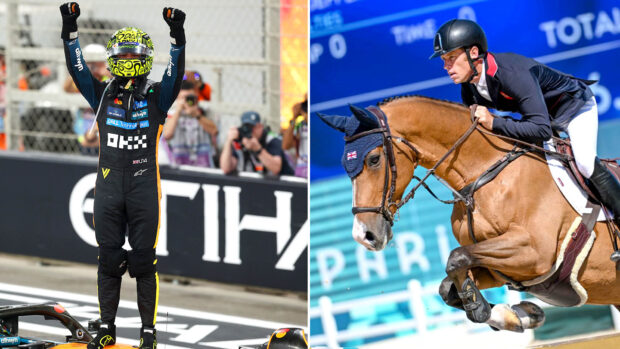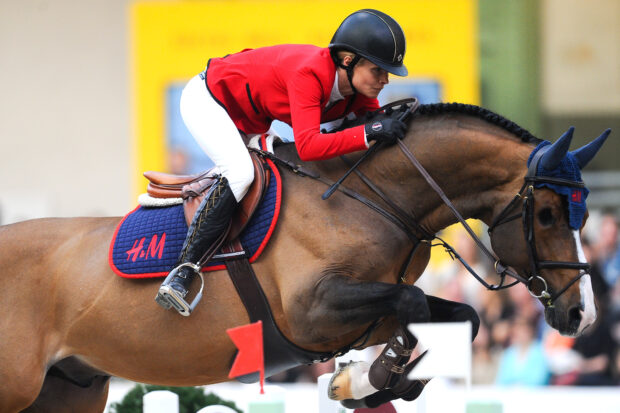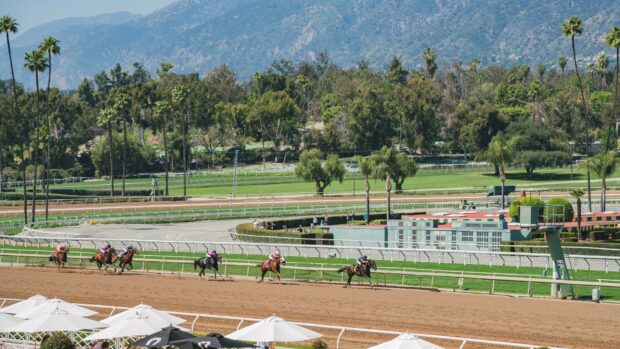It is easy for show jumping riders to criticise eventers’ efforts, but galloping to solid fences involves a totally different technique from being absolutely clean over light poles. Eventers – horses and riders – must be able to do both.
It’s not so much the size or difficulty of show jumping fences that causes eventers so much grief, but the problem of getting the horse going in a totally different pattern. The same can be said of all-round horses who alternate between, say, hunting and show jumping. A horse which is only ever show jumped can be kept constantly on the same stride, in the same rhythm and outline. Eventers do not have that luxury.
Horses for courses
Typical show jumping and eventing horses do not differ much in type, each discipline favouring a quality stamp. Both also need to be exceptionally brave at the top end of their respective sports.
Top-class eventers must be bold in the extreme to jump some of the obstacles put in front of them. It’s a fine line, though – sometimes they are so bold that they are disrespectful of what appear to be flimsy show jumps.
At one time, people used to buy a not-very-careful show jumper to go eventing. But at the higher levels of the modern sport, that is not good enough.
Today’s technical cross-country obstacles demand eventers to be naturally as quick in front as any show jumper. Behind the saddle, however, I would look for a more extravagant action in the pure show jumper and an economical one in the eventer.
Classic mistakes
Event riders tend to start a show jumping round on too much of an open stride. Four or five strides from the first fence, they realise they are coming in too strong and begin to check.
Because he’s not controlled between hand and leg, the horse runs through his bridle, the rider checks more desperately in an effort to set him up and the end result is a hollow jump.
The solution lies in training the horse to shorten his stride, while still maintaining forward impulsion. This is what we mean by a horse “coming back to you”.
Solving the problemTraining should revolve around the theory that it’s always easier to open up a horse than to bring it back (this is why eventers always show jump better before the cross-country).
Many eventers show jump their horses indoors through the winter. This is definitely the right thing to do, as it’s the ideal way to establish pace and rhythm. Show jumping also helps eventers cope with the increasing number of highly technical combination cross-country fences.
On the flatPractice adapting the horse’s outline by working in an oblong school, extending cross-countrystyle down the long sides, thencompressing between hand and leg, show jumping-style, round the corners. This can be achieved by working through walk, trot and canter. If the horse will not come back, use half-halts to exaggerate what you want him to do.
If you have a cantering fast-work session, always bring him back to a bouncy, but forward-moving canter before you finish. This flatwork should translate to lengthened and shortened strides when you are jumping, so don’t do anything different when you are in the ring.
A long, free canter designed to cover the ground on the cross-country, but with the horse still up to his bridle. The horse¨s forward movement creates the impulsion. A compressed canter for the show jumping phase – equally useful when approaching a cross-country combination fence. The rider sits up more and uses a stronger leg, while keeping a constant contact. There is nobody better at this than Mark Todd. Fence to fence
The reason why we need a more collected canter to show jump successfully is because we want the horse to make a rounded bascule. Whereas a solid cross-country fence will back him off, we must create this effect artificially for show jumping. Also,of course, a slight rub on a fence – caused by jumping in a low, flat outline – doesn’t matter much on the cross-country, it could cost you the class in the show jumping phase.
As an experiment, we measured the distance the same horse covered over a fixed brush fence, compared with a set of show jumping planks of the same height. Over the brush, take-off to landing measured 18ft, exactly double the 9ft he covered over the planks. Two completely different approaches in terms of shape and speed produced two totally different jumps.
- Although a fluent, economical jump, moving swiftly away from the obstacle (as seen over the brush), is the ideal cross-country technique, the horse would probably hit the upright planks if he jumped them in the same style.
Also, landing so far out on a running stride over a show jump makes it harder to set him up for the next fence, which could be on a related distance, or round a corner.
Jumping practice
The typical bold eventer, who is happiest bowling along across country, is often caught out by the shorter striding patterns in show jumping doubles, combinations and related distances.
He will benefit from working over grids from a steady, but impulsive, approach. The fences need not be big, but the distances should be on the short side (eg: 20ft for a one-stride double of small cross-poles).


